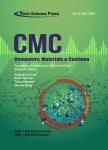Modeling Bacterial Species: Using Sequence Similarity with Clustering Techniques
作者机构:University of AlcaláAlcaláde Henares(Madrid)28871Spain Camilo JoséCela UniversityMadrid28007Spain
出 版 物:《Computers, Materials & Continua》 (计算机、材料和连续体(英文))
年 卷 期:2021年第68卷第8期
页 面:1661-1672页
核心收录:
学科分类:0831[工学-生物医学工程(可授工学、理学、医学学位)] 0808[工学-电气工程] 0809[工学-电子科学与技术(可授工学、理学学位)] 08[工学] 0805[工学-材料科学与工程(可授工学、理学学位)] 0701[理学-数学] 0812[工学-计算机科学与技术(可授工学、理学学位)] 0801[工学-力学(可授工学、理学学位)]
主 题:Clustering bacterial species k-means sequence alignment
摘 要:Existing studies have challenged the current definition of named bacterial species,especially in the case of highly recombinogenic bacteria.This has led to considering the use of computational procedures to examine potential bacterial clusters that are not identified by species naming.This paper describes the use of sequence data obtained from MLST databases as input for a k-means algorithm extended to deal with housekeeping gene sequences as a metric of similarity for the clustering process.An implementation of the k-means algorithm has been developed based on an existing source code implementation,and it has been evaluated against MLST data.Results point out to potential bacterial clusters that are close to more than one different named species and thus may become candidates for alternative classifications accounting for genotypic information.The use of hierarchical clustering with sequence comparison as similarity metric has the potential to find clusters different from named species by using a more informed cluster formation strategy than a conventional nominal variant of the algorithm.



